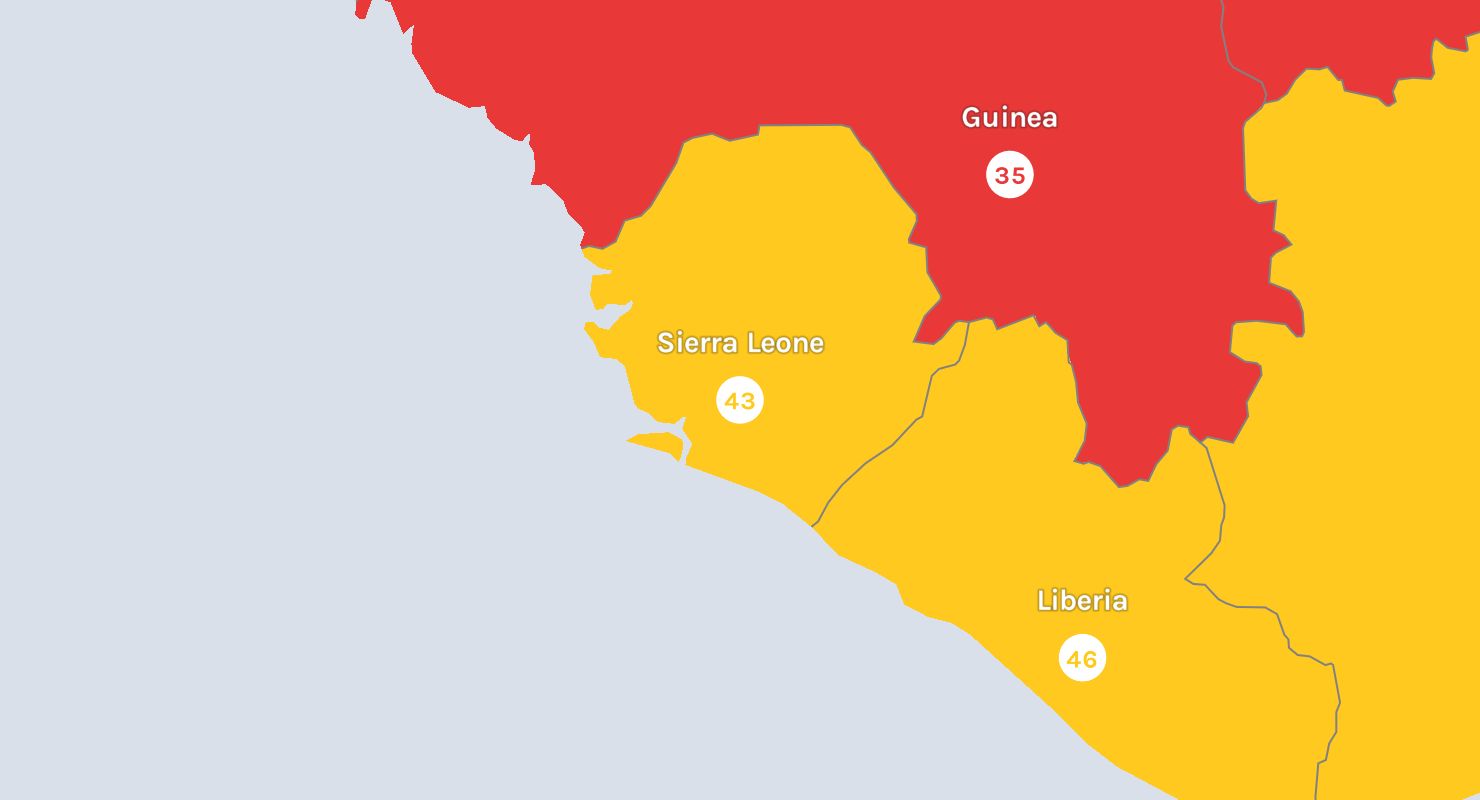Download All Country Data
ReadyScore®
The ReadyScore is a measurement of a country's ability to find, stop and prevent health threats. A score of 80% or higher indicates that a country is ready for an epidemic. Learn More
Data source: WHO JEE reports
Sierra Leone has work to do to prepare for the next epidemic. They are committed to improving preparedness, but an outbreak today could cause deaths and cross borders.
Sierra Leone has finished their National Action Plan and is working on improving epidemic preparedness in one or more gap areas.
The Key 7 ReadyScore factors are the 7 technical areas that the Resolve to Save Lives team focuses on, selected from the 19 areas assessed by the JEE. These 7 areas are the foundational technical areas for epidemic preparedness that contribute to health system strengthening. The remaining 12 areas build off of the strong systems that the Key 7 form.
Data source: WHO JEE reports
Strengths & Gaps
Strengths
Preparedness areas that a country has established to find, stop and prevent health threats. Learn More

Gaps
Gaps are areas that the country should prioritize to improve so they will be better prepared to find, stop and prevent epidemics. Learn More





JEE Assessment Progress

Assess
Completed independent and transparent assessment of epidemic preparedness.
Assessed on October 31, 2016

Plan
Developed a plan to address critical gaps in epidemic preparedness.
National Action Plan was completed on November 7, 2017

Step Up
Improved epidemic preparedness in one or more areas (as indicated by JEEs).

Get to Green
Achieved ReadyScore of 80 or higher.
Sustain
Preparedness requires continuous efforts and investments to prevent epidemics.
ReadyScore Factors
A country’s ability to find, stop and prevent epidemics is based on their performance in 19 preparedness areas, such as whether they have an emergency operations center, laboratory network or disease tracking system. Learn More
Data source: WHO JEE reports
Mandatory Self-Assessment
The International Health Regulations Annual Report is an annual self-assessment of epidemic preparedness. Learn More
Data source: WHO JEE reports












Voluntary Monitoring
As part of their commitment to the International Health Regulations, countries complete voluntary monitoring activities to support continued assessment of their strengths and gaps, and to inform prioritization of epidemic preparedness activities. Learn More
Data source: WHO e-SPAR reports
Simulation Exercise
A Simulation Exercise is an activity where essential groups required for emergency response — government, health facilities and partners — simulate an emergency and its full response. This allows for an assessment of gaps in preparedness and response.
- August 1, 2016
- September 1, 2016
- October 23, 2020
- March 23, 2021
After Action Review
An After Action Review is a systematic review of the response to an outbreak or epidemic to identify strengths and challenges and determine how to improve the response in the future.
- Natural disaster - September 1, 2017





Share this page: